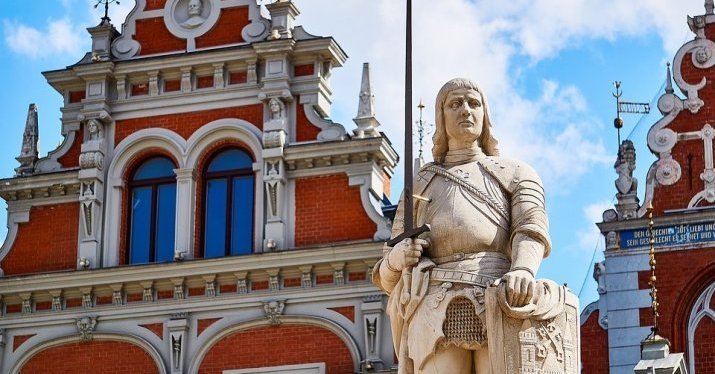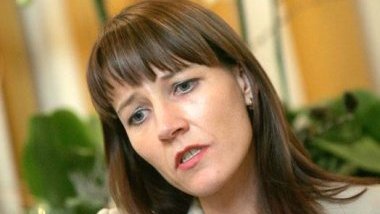What are the “Baltic States”, actually? In Western Europe and in many other regions around the world, this expression refers to three small countries located in the north-eastern side of the Baltic Sea: Lithuania, Latvia and Estonia. The combined area of these three countries is equivalent to the third of the French metropolitan area (around 175,000 km²), but their population amounts only to the half of Île-de-France (6 million inhabitants). Consequently, the area is quite little known. However, these countries do not use the expression “Baltic States” at all! According to an Estonian diplomat in office in Berlin in the 2000s, the “Baltic” countries simply do not exist.
Indeed, culturally speaking these three countries are very different, and are “unfortunately” small and isolated, as a “peninsula of the Schengen area”. However, they look unfavourably on being lumped together, because the only times in history they were “united” refer to the forced integration into the Russian Empire and then into the USSR, even if this last occupation is not officially recognised (that’s why 2018 is officially the centenary of their independence). This article will show that the multiscale integration of these three countries reflects their intense will to be part of Western Europe and to turn away from Russia, at the risk of creating geopolitical and identity tensions. If cooperation between Baltic countries remains quite limited, their participation to integration at the Baltic, European and Atlantic levels is very strong.
The protection of national identities prevents an infra-Baltic cooperation
The importance of national identity is crucial to understand the state construction of the Baltic countries. Indeed, as elsewhere in Central and Eastern Europe, the idea of a cultural and linguistic Nation predates the creation of a State (contrary to Western Europe and especially France, where the State shaped the French identity including by vigorously restraining regional particularities). In addition, this identity was built in opposition to Russian and German political and cultural dominations in the 19th century, and was kept down by Soviet authorities during the second half of the 20th century. This gives a singular strength to national identity. When Lithuania, Latvia and Estonia regained their independence in 1990, the protection of their respective identities was the absolute priority. This probably prevented a reinforced collaboration between the three countries.
The individual quest for “ancestral” links with culturally and historically closed areas opposed the weak infra-Baltic cooperation. Estonia is seeking to restore very strong links with Finland and Sweden, thus trying to be considered as a “Nordic” country. On the other hand, Lithuania is seeking to restore with Poland ties that used to exist until the end of the 18th century. The “Baltic” region seems then strategically torn. Nonetheless a sort of local cooperation exists along borders. The projects which are developed aim at finding solutions to local problems (such as environmental pollution) or at improving infrastructures. The most famous project is Valga-Valka, situated at the Latvian-Estonian border. Local projects are also set up along the Šventoji river, between Lithuania and Latvia.
The Baltic Sea, a common and privileged horizon, at the cost of internal tensions
Finally, one of the sole common features between the three Baltic States is the importance of the Baltic maritime frontage. This sea, almost closed, is both separated from metropolis and European networks, and from the geographic centre of the European Union (as a sort of Northern Europe’s “mare nostrum”). A dense network of cooperation has been developed, as the Council of the Baltic Sea States (CBSS) illustrates it. This structure is very important for the Baltic States, which consolidated their democratic transition towards market economy. Many other regional organisations exist, such as the Euroregion Baltic, the B7 Baltic Islands Network (the seven biggest Baltic islands, two of which are Estonian) and the Union of the Baltic Cities (composed of more than 100 cities).
While the Baltic governments’ will to join Western European organisations is widely supported by public opinion, it tends to generate frustration among marginalised populations, especially Russian-speaking people who represent around 25% of the Estonian and Latvian population. Latvia is an immediate neighbour of the Kaliningrad oblast, an isolated and strategic area of Russia. The EU and Russia try to cooperate in the framework of the European Neighbourhood Policy (ENP) but many administrative difficulties and a mutual distrust between authorities remain. Consequently, the Russian-Baltic cooperation is hampered by identity and geopolitical obstacles.
European Union and NATO as two indivisible objectives
Marking the beginning of its dissolution, the USSR recognised the independence of the three Baltic States in September 1991. The three countries then applied almost simultaneously to EU and NATO’s membership. Among Baltic leaders, joining these two organisations (effective in 2004) was necessary and coherent since the EU symbolised economic integration and NATO the American military protection. These memberships were supposed to be a solution to the main concern of the Baltic States: the possible resurgence of Russian irredentism. In the meantime, the marginalisation of Russian-speaking people was aimed at limiting the Kremlin’s influence.
Almost 14 years after the Baltic countries joined the EU, what results can be seen? Although positive, the situation is quite mixed. The three countries figure among the most integrated members of the EU (especially by belonging to the Schengen area and the single currency). Nonetheless, their will to implement the strictest neoliberalist instructions in the 1990s contributed to their collapse during the financial crisis (Latvia was particularly affected with a 15% drop in its GDP and asked for a financial assistance from the IMF). In addition, the low turnout at the European elections symbolises the lack of a European public opinion and the Baltic citizens’ relative indifference to the idea of European democracy.
Despite their weak demographic and geopolitical weight, the Baltic States try to influence the direction of the Common Foreign Security Policy (CFSP) and of the ENP, in particular in the relations with Russia. In this way, the Baltic countries support a European military integration, especially since Donald Trump took office in the White House. They also have important ties with the GUAM countries (Georgia, Ukraine, Azerbaijan and Moldova) to pass on their experience of successful transition and to tie them up with the Western bloc, creating as such a “cordon sanitaire” around Russia.
Lithuania, Latvia and Estonia’s strong will of integration in Western Europe meets two complementary logics. First, a logic of security and political stability (through NATO and the CFSP in case of Russian “threat”). Second, a logic of “identity”: the Baltic States are extremely defensive over their national identities that were oppressed by the Soviets, and the integration into the EU and the Baltic area underlines their affiliations to the “Western European” civilisation. This dimension is even somewhat characterised by ideological confrontations, through the marginalisation of Russian-speaking populations, deteriorating even more the relations with Russia. Economic integration is underlying the first two logics (through economic security, especially in terms of energy supply and by choosing to adopt market economy as a major “Western” value).






Follow the comments: |
|
